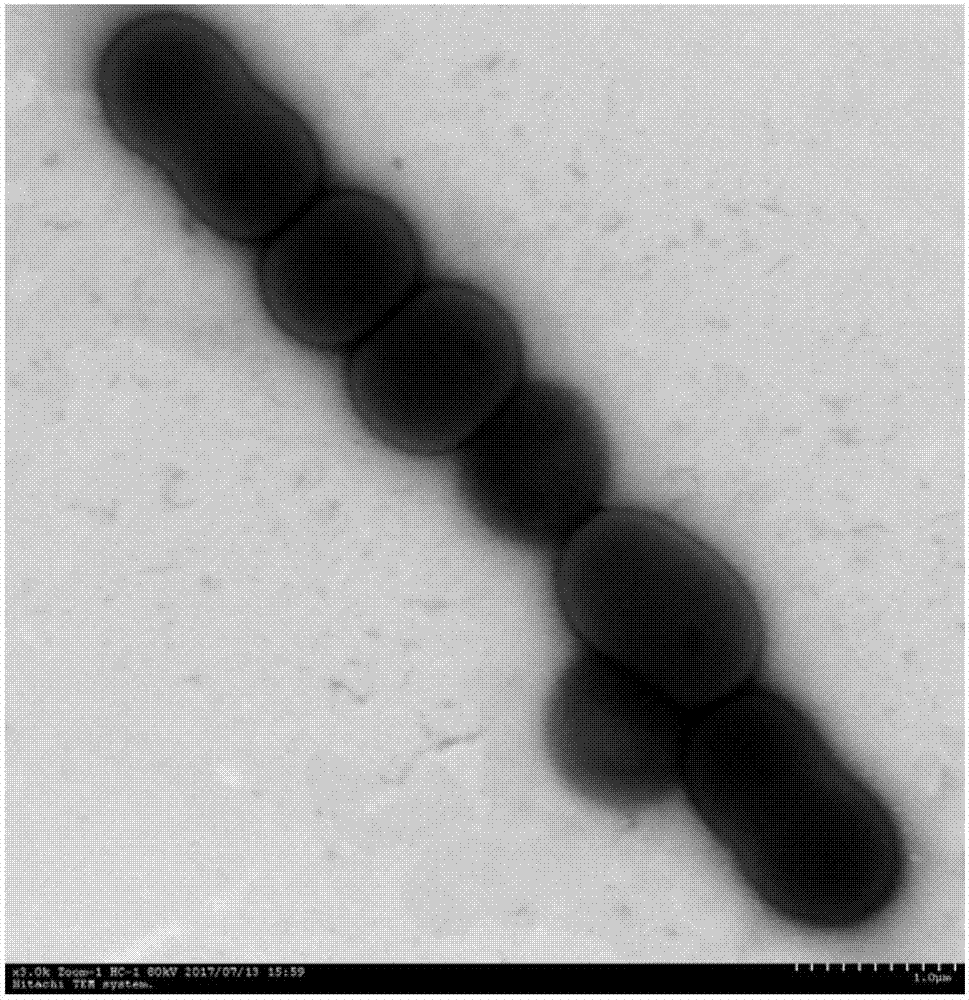Acinetobacter lactucae and application thereof to degradation of quorum-sensing signal molecule DSF
A quorum sensing signal and signal molecule technology, applied in applications, bacteria, animal repellants, etc., can solve the problems of the small number of DSF degrading strains and the inability to meet the biological control of diseases, reduce the pollution of pesticide residues, and greatly promote the application. Potential, effectiveness in reducing the problem of antibiotic misuse
- Summary
- Abstract
- Description
- Claims
- Application Information
AI Technical Summary
Problems solved by technology
Method used
Image
Examples
Embodiment 1
[0043] The acquisition and identification of embodiment 1 Acinetobacter strain QL-1
[0044] 1. Isolation and screening of strain QL-1
[0045] (1) Soil sample collection: The rice rhizosphere soil collected from the test field was used as the microbial source.
[0046] The soil samples were collected from the rice rhizosphere soil in the experimental field of South China Agricultural University in Guangzhou City, Guangdong Province on July 16, 2016. The soil from the surface layer to the depth of 5 cm was sampled, bagged, and preserved as a microbial source for strain isolation.
[0047] (2) Enrichment culture of bacterial strains: prepare MSM medium, put 50mL of MSM medium into a 250mL Erlenmeyer flask for sterilization, add DSF mother liquor (methanol is solvent) under aseptic conditions after cooling, to make the final mass of DSF The concentration was 50 μM, and 5 g of soil samples were added at the same time. After culturing on a shaker at 30 ° C and 200 rpm for 7 days,...
Embodiment 2
[0075] Antibiotic susceptibility analysis of embodiment 2 bacterial strain QL-1
[0076] In order to better study the biocontrol potential of the bacterial strain QL-1 obtained in Example 1, we studied the antibiotic sensitivity of the bacterial strain QL-1. Such as Figure 5 As shown, the strain is resistant to chloramphenicol (CM) up to 200 μg / mL or more, to ampicillin (AMP) up to 50 μg / mL, to rifampicin (RIF) and carbenicillin (CARB) Resistance reaches 20μg·mL -1 , the resistance to streptomycin (STR), kanamycin (KAN), gentamicin (GEN), tetracycline (TET) is less than 10 μg / mL. This result is helpful for selecting appropriate antibiotics as a reference in follow-up studies.
Embodiment 3
[0077] The determination of the growth and degradation DSF relation curve of embodiment 3 bacterial strain QL-1
[0078] 1. Pick a single colony of strain QL-1 and inoculate it in LB medium to pre-culture to the logarithmic phase. After the obtained bacterial solution is centrifuged at 4000rpm for 5 minutes, the supernatant is discarded, and the bacterial cells are washed with 0.9% sterile saline and weighed. Suspended, as a seed suspension, inoculated into 50mL MSM basal medium at an inoculum size of 1:100, and added DSF mother solution to make the final concentration 2mM, cultured at 30°C, 200rpm for 24h, and took samples regularly. Collect samples at different time points and measure OD by spectrophotometer 600 The value represents the growth situation of bacterial strain QL-1, and the residual amount of DSF measured by HPLC represents the degradation situation of bacterial strain QL-1 to DSF.
[0079] 2. The results of HPLC detection are as follows: Figure 6 Shown (wher...
PUM
 Login to View More
Login to View More Abstract
Description
Claims
Application Information
 Login to View More
Login to View More - R&D
- Intellectual Property
- Life Sciences
- Materials
- Tech Scout
- Unparalleled Data Quality
- Higher Quality Content
- 60% Fewer Hallucinations
Browse by: Latest US Patents, China's latest patents, Technical Efficacy Thesaurus, Application Domain, Technology Topic, Popular Technical Reports.
© 2025 PatSnap. All rights reserved.Legal|Privacy policy|Modern Slavery Act Transparency Statement|Sitemap|About US| Contact US: help@patsnap.com



